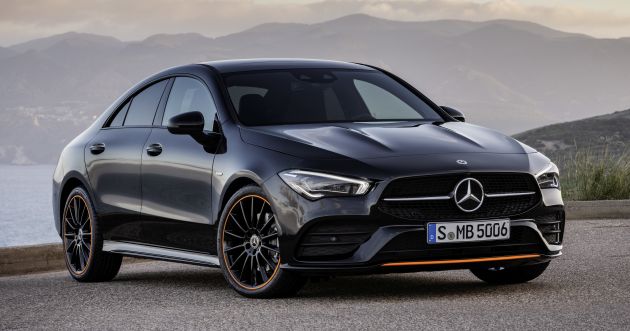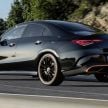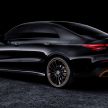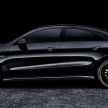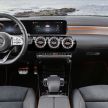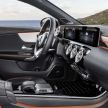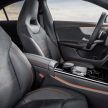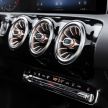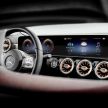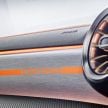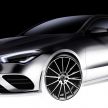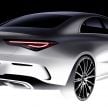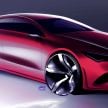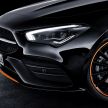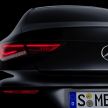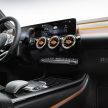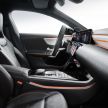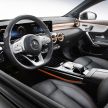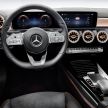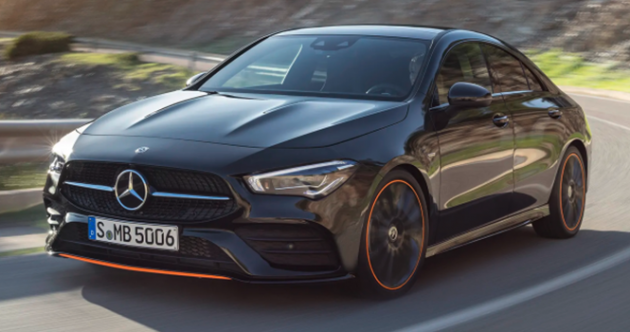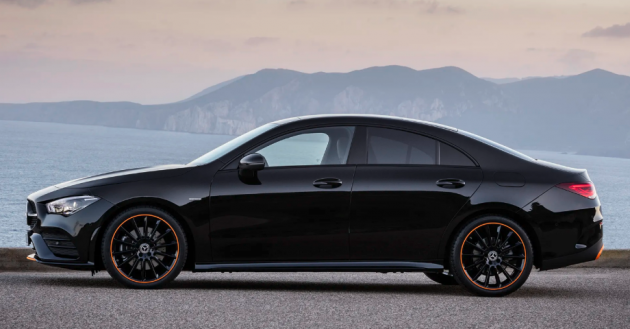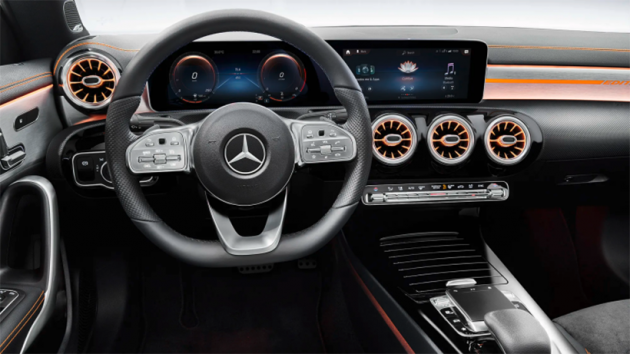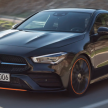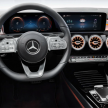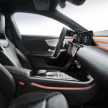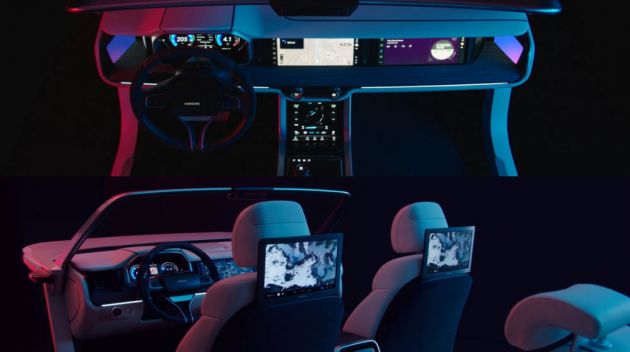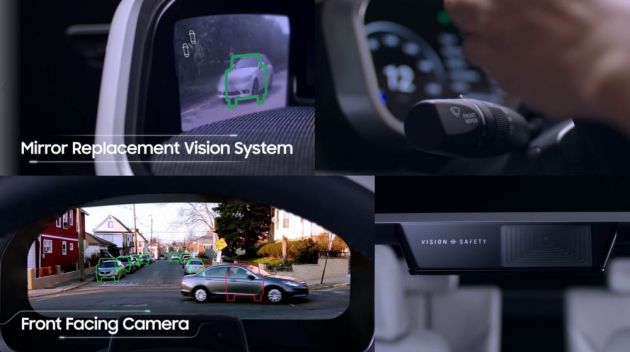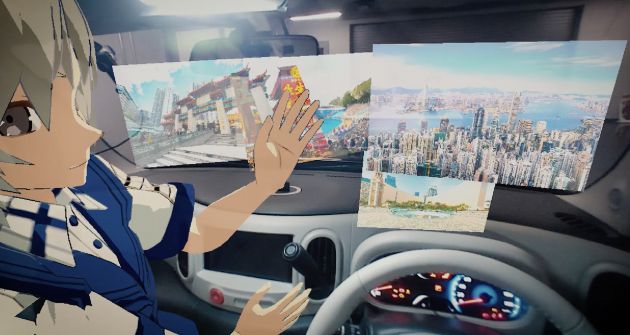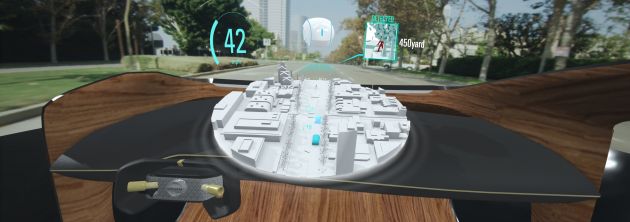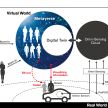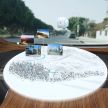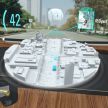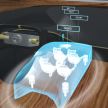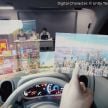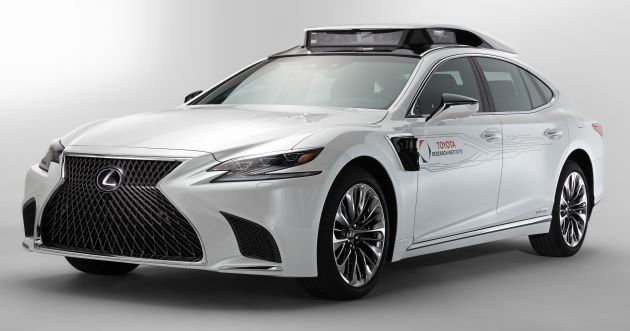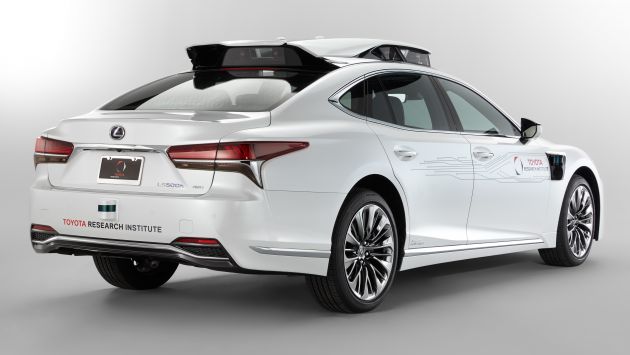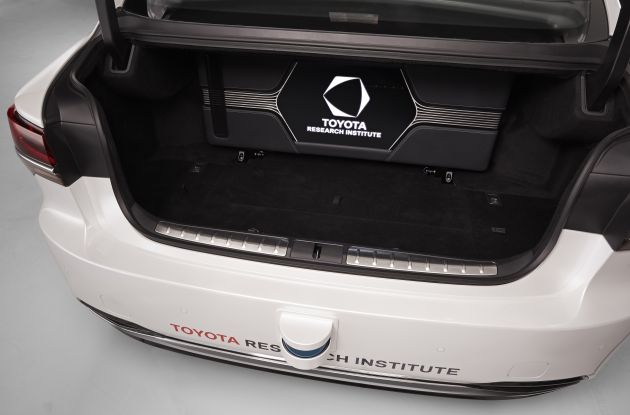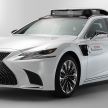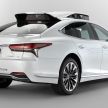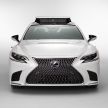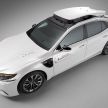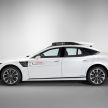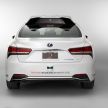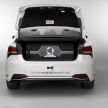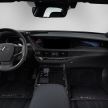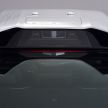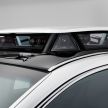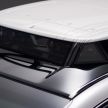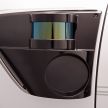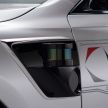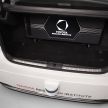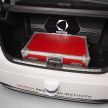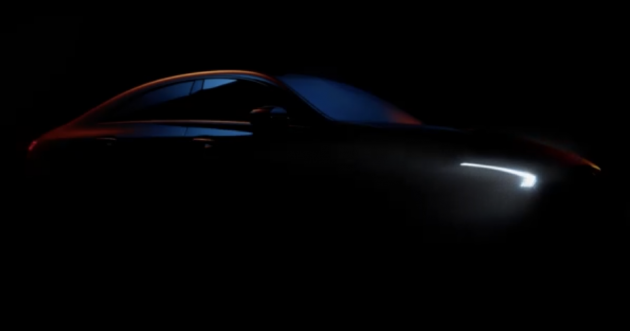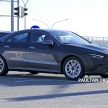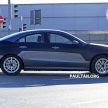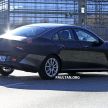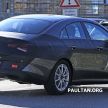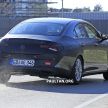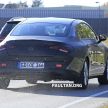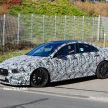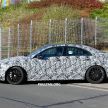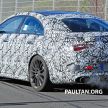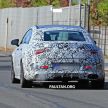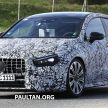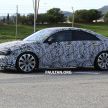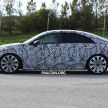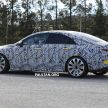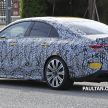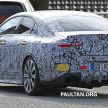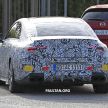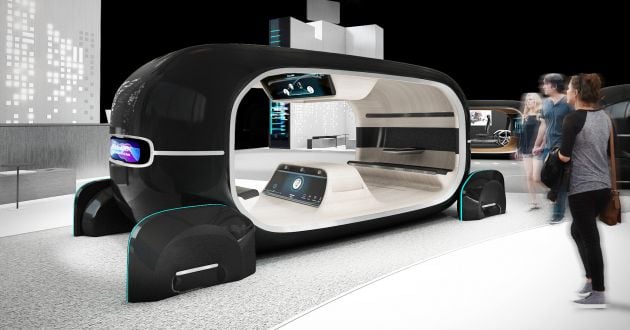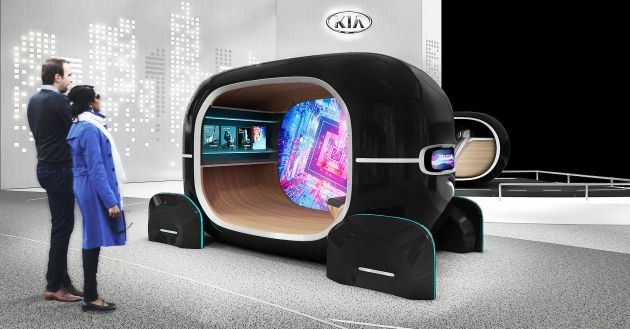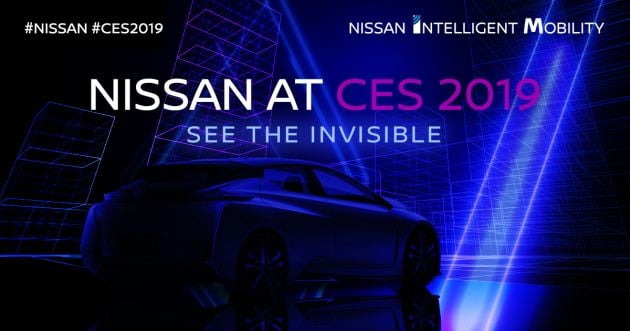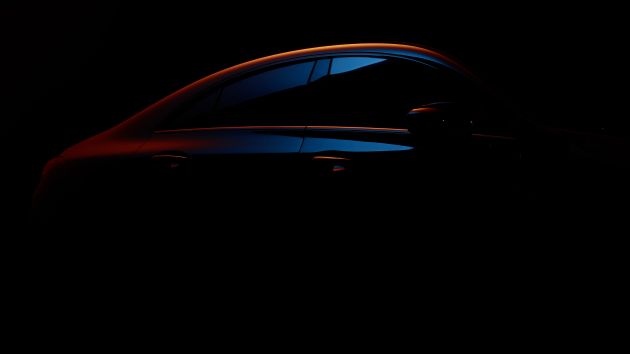The C118 Mercedes-Benz CLA – which was inadvertently revealed yesterday – has now been officially unveiled, the all-new four-door coupe making its debut at the 2019 Consumer Electronics Show in Las Vegas.
The second-gen, which sits on the automaker’s Modular Front Architecture (MFA2) platform that also underpins the W177 A-Class, is a larger car than its predecessor. Measuring in at 4,688 mm long, 1,830 mm wide and 1,439 mm tall, it’s 48 mm longer, 53 mm wider and two mm shorter than the C117. Wheelbase length is also up, now 2,729 mm, an increase of 30 mm over the old car.
The new CLA also features a wider track, by 63 mm at the front and 55 mm at the rear compared to the first-gen. Styling-wise, the new car is less radically revised compared to its hatch sibling, and the general shape and lines makes it somewhat of a scaled-down CLS. The new form also results in improved aerodynamics for the car.
As standard, the new CLA is equipped with halogen headlamps with integrated LED daytime driving lamps, but LED High Performance and Multibeam LED units are available as options. The tail lamps are also available with all-LED technology. As for wheels, the available range starts from standard fit 16-inch units right up to 19-inch models.
The interior, meanwhile, features a front end that has essentially been lifted almost wholesale from the A-Class, complete with a wide, free-standing flatscreen display panel and turbine-style air vents. The cabin of the old car was pretty much a cramped affair, and attempts to address this sees changes in dimension and scope.
Numbers-wise, front headroom is up by 17 mm, the rear by three mm, and there’s more elbow room both in front and at the rear, increased by 35 and 44 mm respectively. Likewise, shoulder room is also up, although legroom measurements remains virtually the same as it was in the old car.
Aside from the free-standing flatscreen display, tech bits include an upgraded version of the Mercedes-Benz User Experience (MBUX) infotainment system, the latter incorporating features borrowed from the new GLE. The MBUX now gets an Interior Assist function, which operates via gesture control. The system is able to distinguish between gesture commands from the driver and front passenger and functions both in sunlight and in complete darkness.
Smart functions include the switching on/off of the reading lamp by briefly extending a hand towards the rear-view mirror and illuminating the map light when the driver reaches over towards the unoccupied front passenger seat in the dark. As is the case with the A-Class, there’s also ‘Hey Mercedes’ voice control functionality, and the equipment list also includes Energising comfort control, with a new Energising Coach function.
Driving assistance systems – with functions adopted from the S-Class – find their way on. Plenty of active gear in the kitbag, with enhanced Active Brake Assist and Active Lane Keeping Assist standard fit. The item list also includes Active Distance Assist Distronic, Active Emergency Stop Assist and Active Lane Change Assist.
The display car in Las Vegas is a CLA 250 variant, which is equipped with a M260 2.0 litre turbo four-cylinder petrol engine making 224 hp at 5,500 rpm and 350 Nm between 1,800 to 4,000 rpm. A host of engines will be available for the car by its market launch in May, and these should include a Renault-derived M282 1.33 litre petrol and a 1.5 litre diesel as seen on the A-Class.
There should also be a number of high-performance AMG versions such as a 306 hp CLA 35 and a CLA 45, offered in either base 387 hp trim or a pumped-up 421 hp S variant.
In its first year, the CLA – which will be built at the automaker’s Kecskemét plant in Hungary – is set to enter the market in May. An Edition 1 model will be available in the car’s first year of production, and this one will feature the usual accoutrements of the type.

